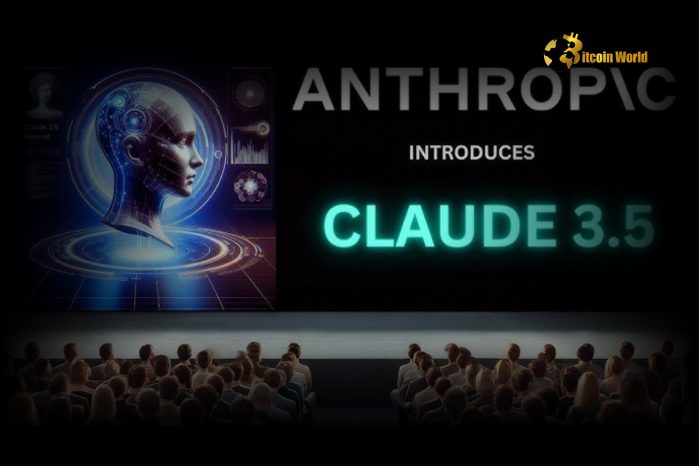
Bitcoin exchange-traded funds (ETFs) have recorded significant outflows totaling $1.14 billion over the past two weeks. The sell-off comes as global financial markets face increasing uncertainty, with geopolitical tensions between the U.S. and China adding to investor caution. Investor Sentiment Shifts as Bitcoin Pulls Back After experiencing strong inflows earlier in the year, Bitcoin ETFs are now seeing a reversal as traders and institutions take profits. The outflows coincide with Bitcoin’s price correction, which has seen the asset struggle to maintain momentum after reaching record highs. Some analysts suggest that investors are reallocating capital into traditional assets, particularly amid rising concerns over global economic instability. “Bitcoin ETFs have been a popular investment vehicle, but with geopolitical risks increasing, some investors are choosing to reduce exposure to volatile assets,” one analyst explained. Impact of US-China Trade Tensions on Crypto Markets The ongoing trade disputes between the U.S. and China have created economic uncertainty, affecting various financial markets, including cryptocurrencies. Bitcoin, often seen as a hedge against inflation and geopolitical risks, has faced mixed reactions in this environment. While some investors view Bitcoin as a safe-haven asset, others are moving away from riskier investments amid economic instability. The result has been a shift in Bitcoin ETF flows, reflecting broader sentiment changes in global finance. ETF Market Trends and Institutional Behavior The $1.14 billion in outflows suggests that some institutional investors are adjusting their portfolios in response to market conditions. However, it remains unclear whether this trend will persist or if inflows will return once uncertainty eases. Bitcoin ETFs have played a crucial role in bringing institutional capital into the crypto space, and any prolonged decline in demand could influence Bitcoin’s price trajectory. However, previous trends have shown that ETF interest can fluctuate based on market cycles and macroeconomic developments. Conclusion The recent outflows from Bitcoin ETFs highlight the impact of broader financial market trends on crypto investments. As U.S.-China trade tensions continue to evolve, investors will closely monitor how Bitcoin and ETF markets react. For now, Bitcoin remains a key asset in the global financial landscape, but its price and institutional adoption will likely be influenced by ongoing geopolitical and economic developments.
CryptoIntelligence
You can visit the page to read the article.
Source: CryptoIntelligence
Disclaimer: The opinion expressed here is not investment advice – it is provided for informational purposes only. It does not necessarily reflect the opinion of BitMaden. Every investment and all trading involves risk, so you should always perform your own research prior to making decisions. We do not recommend investing money you cannot afford to lose.
Revolutionary Claude 3.7 Sonnet: Anthropic Unveils Breakthrough Hybrid AI Model with Limitless Thinking

In the fast-paced world of artificial intelligence, where innovation is the name of the game, Anthropic has just dropped a bombshell. Imagine an AI that doesn’t just spit out quick answers, but actually takes its time, ponders, and ‘thinks’ deeply about your questions. That’s precisely what Anthropic’s new AI model , Claude 3.7 Sonnet, promises to deliver. For crypto enthusiasts and tech-savvy individuals who understand the power of sophisticated algorithms, this development is a game-changer. Let’s dive into why Claude 3.7 Sonnet is making waves and what it means for the future of AI interactions. Unveiling Claude 3.7 Sonnet: A New Era of AI Reasoning Model Anthropic is calling Claude 3.7 Sonnet the industry’s first “hybrid AI reasoning model .” But what exactly does that mean? Unlike typical AI models that offer a single approach to answering questions, Claude 3.7 Sonnet is designed to be versatile. It can provide both rapid, real-time responses and more considered, in-depth answers, depending on what you need. This is a significant leap forward, moving away from the often confusing model selection process that users currently face with many AI chatbots. Here’s a breakdown of what makes Claude 3.7 Sonnet stand out: Hybrid Reasoning: This innovative design allows the AI model to switch between quick and deep thinking modes within a single model. No more choosing between different models for different levels of complexity. User-Controlled Reasoning: You get to decide whether to activate the model’s “reasoning” abilities. This control lets you tailor the AI’s approach to the task at hand, whether you need a fast answer or a thoroughly considered one. Simplified User Experience: Anthropic aims to streamline AI interaction. Instead of overwhelming users with numerous model options, Claude 3.7 Sonnet offers a unified solution that adapts to various needs. How Does Anthropic’s Revolutionary Hybrid AI Reasoning Model Work? The core concept behind Claude 3.7 Sonnet is to mimic human-like thinking processes. Traditional AI models often rely on pattern recognition and quick data retrieval. However, reasoning models like Claude 3.7 Sonnet take a different approach. They break down complex problems into smaller, manageable steps. This process, inspired by deductive reasoning, allows the AI to explore different angles, consider various possibilities, and ultimately arrive at a more accurate and nuanced answer. Think of it like this: Feature Traditional AI Models Claude 3.7 Sonnet (Hybrid Reasoning Model) Reasoning Approach Direct, pattern-based response Step-by-step problem decomposition Thinking Time Fast, immediate answers Variable, user-controlled ‘thinking’ duration Model Selection Multiple models for different tasks Single, versatile hybrid model Output Quality Good for simple queries Enhanced accuracy and nuance for complex questions This method is especially beneficial for tasks requiring in-depth analysis, such as complex coding problems or intricate strategic planning. For those in the crypto space dealing with complex market analysis or smart contract development, the potential of a robust reasoning model is immense. Claude 3.7 Sonnet vs. The Competition: Pricing and Performance Benchmarks While Claude 3.7 Sonnet boasts impressive capabilities, it’s essential to consider its cost and performance relative to other AI models in the market. Anthropic has priced Claude 3.7 Sonnet at $3 per million input tokens and $15 per million output tokens. Let’s see how this stacks up against competitors like OpenAI and DeepSeek: Model Input Tokens (per 1M) Output Tokens (per 1M) Type Claude 3.7 Sonnet $3.00 $15.00 Hybrid Reasoning OpenAI o3-mini $1.10 $4.40 Reasoning Model DeepSeek R1 $0.55 $2.19 Reasoning Model Claude 3.7 Sonnet is positioned as a premium offering, reflecting its hybrid nature and advanced capabilities. While models like o3-mini and R1 are cheaper, they are strictly reasoning models and lack the hybrid versatility of Claude 3.7 Sonnet. Anthropic argues that the enhanced performance and flexibility of their AI model justify the higher price point, especially for users who need a comprehensive AI solution. Performance benchmarks further support Anthropic’s claims: SWE-Bench (Real-world coding tasks): Claude 3.7 Sonnet achieved 62.3% accuracy, outperforming OpenAI’s o3-mini (49.3%). TAU-Bench (Simulated retail interaction): Claude 3.7 Sonnet scored 81.2%, surpassing OpenAI’s o1 model (73.5%). These results indicate that Claude 3.7 Sonnet excels in real-world applications, particularly in complex tasks that demand robust reasoning and adaptability. Anthropic’s Vision: AI That Thinks Like You, But Better? Anthropic AI isn’t just aiming for incremental improvements; they’re envisioning a future where AI seamlessly integrates into our daily lives, understanding our needs and adapting to them intuitively. Diane Penn, Anthropic’s product and research lead, highlighted this vision, stating that eventually, Claude should automatically determine the optimal “thinking” time for each question, much like humans do. This approach is reflected in Claude 3.7 Sonnet’s “visible scratch pad” feature. Users can actually see Claude’s thinking process for most prompts, offering unprecedented transparency into how the AI model arrives at its conclusions. While some parts of the process might be redacted for safety reasons, this level of visibility builds trust and provides valuable insights into the AI’s reasoning. Claude Code: An Agentic Coding Tool for Developers Alongside Claude 3.7 Sonnet, Anthropic AI is also launching Claude Code, an agentic coding tool currently in research preview. This tool is designed to empower developers by allowing them to interact with Claude directly from their terminal. Imagine being able to: Analyze Codebases: Use simple English commands to understand project structures. Modify Code: Make changes to codebases using natural language instructions. Automate Tasks: Test for errors and push code to repositories directly through Claude Code. Claude Code promises to streamline the development process, making it more efficient and accessible. For developers in the crypto space working on blockchain projects, smart contracts, or decentralized applications, this tool could significantly enhance productivity and simplify complex coding tasks. The Road Ahead: Anthropic Leading the AI Revolution? Anthropic AI is making a bold move by releasing Claude 3.7 Sonnet and Claude Code. In a market where new AI models are constantly emerging, Anthropic is aiming to lead the pack, shifting from a historically cautious approach to a more assertive stance. However, the competition is fierce. OpenAI is expected to release its own hybrid AI model soon, as hinted by CEO Sam Altman. The race for AI supremacy is heating up, and Anthropic’s latest innovations are a clear signal that they are ready to compete at the highest level. The question remains: Can Anthropic maintain its lead? With Claude 3.7 Sonnet’s groundbreaking hybrid reasoning capabilities and Claude Code’s developer-centric tools, Anthropic AI is certainly positioning itself as a major player in the AI revolution. For those in the cryptocurrency and broader tech world, keeping a close eye on Anthropic’s advancements is crucial, as they are shaping the future of how we interact with artificial intelligence. To learn more about the latest AI market trends, explore our article on key developments shaping AI features. CryptoIntelligence

Apple Plans to Pour $500 Billion Into US as Trump Tariffs Loom—But Not Everyone Buys It
Apple announced a massive four-year investment plan including a new Texas factory, as the tech giant tries to keep pace with AI research. CryptoIntelligence











